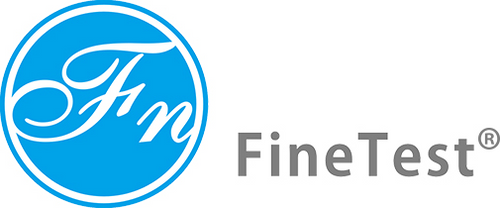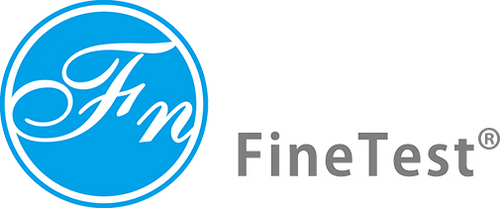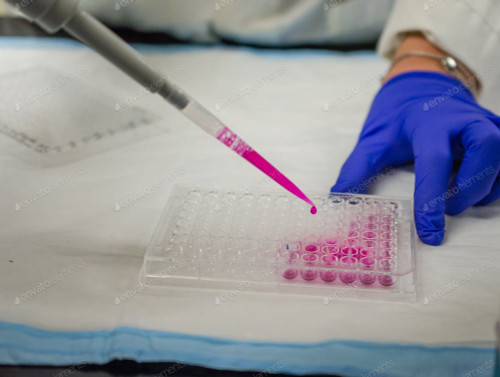Product Description
Recombinant Human Chitinase-3-like protein 1 (CHI3L1) is available at Gentaur for Next week Delivery.
Gene Name: CHI3L1
Alternative Names : 39KDA synovial protein Cartilage glycoprotein 39
Expression Region : 22-383aa
AA Sequence : YKLVCYYTSWSQYREGDGSCFPDALDRFLCTHIIYSFANISNDHIDTWEWNDVTLYGMLNTLKNRNPNLKTLLSVGGWNFGSQRFSKIASNTQSRRTFIKSVPPFLRTHGFDGLDLAWLYPGRRDKQHFTTLIKEMKAEFIKEAQPGKKQLLLSAALSAGKVTIDSSYDIAKISQHLDFISIMTYDFHGAWRGTTGHHSPLFRGQEDASPDRFSNTDYAVGYMLRLGAPASKLVMGIPTFGRSFTLASSETGVGAPISGPGIPGRFTKEAGTLAYYEICDFLRGATVHRILGQQVPYATKGNQWVGYDDQESVKSKVQYLKDRQLAGAMVWALDLDDFQGSFCGQDLRFPLTNAIKDALAAT
Sequence Info : Full Length of Mature Protein
Tag Info : N-terminal 10xHis-SUMO-tagged and C-terminal Myc-tagged
Theoretical MW : 60.5 kDa
Storage Buffer : Tris/PBS-based buffer, 5%-50% glycerol. If the delivery form is lyophilized powder, the buffer before lyophilization is Tris/PBS-based buffer, 6% Trehalose, pH 8.0.
Endotoxin Level : Not tested-
Biological Activity : Not tested
Storage : Short term: -20°C; Long term: -80°C. Minimize freeze and thaw cycles.
Research Area : Signal Transduction
Restriction : For Research Use Only. Not for use in diagnostic procedures, drug use, or for administration to humans or animals.
Relevance : Carbohydrate-binding lectin with a preference for chitin. Has no chitinase activity. May play a role in tissue remodeling and in the capacity of cells to respond to and cope with changes in their environment. Plays a role in T-helper cell type 2 (Th2) inflammatory response and IL-13-induced inflammation, regulating allergen sensitization, inflammatory cell apoptosis, dendritic cell accumulation and M2 macrophage differentiation. Facilitates invasion of pathogenic enteric bacteria into colonic mucosa and lymphoid organs. Mediates activation of AKT1 signaling pathway and subsequent IL8 production in colonic epithelial cells. Regulates antibacterial responses in lung by contributing to macrophage bacterial killing, controlling bacterial dissemination and augmenting host tolerance. Also regulates hyperoxia-induced injury, inflammation and epithelial apoptosis in lung.
Function : Carbohydrate-binding lectin with a preference for chitin. Has no chitinase activity. May play a role in tissue remodeling and in the capacity of cells to respond to and cope with changes in their environment. Plays a role in T-helper cell type 2 (Th2) inflammatory response and IL-13-induced inflammation, regulating allergen sensitization, inflammatory cell apoptosis, dendritic cell accumulation and M2 macrophage differentiation. Facilitates invasion of pathogenic enteric bacteria into colonic mucosa and lymphoid organs. Mediates activation of AKT1 signaling pathway and subsequent IL8 production in colonic epithelial cells. Regulates antibacterial responses in lung by contributing to macrophage bacterial killing, controlling bacterial dissemination and augmenting host tolerance. Also regulates hyperoxia-induced injury, inflammation and epithelial apoptosis in lung.
Involvement in disease : Asthma-related traits 7 (ASRT7); Schizophrenia (SCZD)
Subcellular location : Secreted, extracellular space, Cytoplasm, Cytoplasm, perinuclear region, Endoplasmic reticulum
Protein Families : Glycosyl hydrolase 18 family
Tissue Specificity : Present in activated macrophages, articular chondrocytes, synovial cells as well as in liver. Very low or undetectable expression in non-inflammatory colon. Undetectable in muscle tissues, lung, pancreas, mononuclear cells, or fibroblasts.
Paythway :
Uniprot ID : P36222
 Euro
Euro
 British Pound
British Pound
 US Dollar
US Dollar








